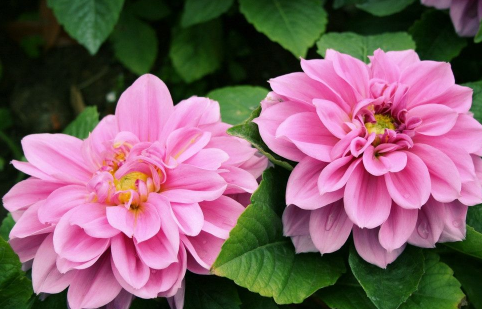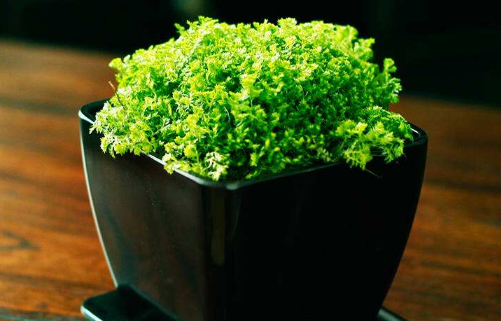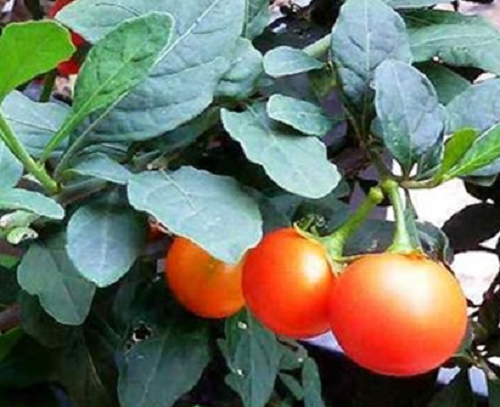Culture methods of Dahlia
1. Soil
It is best to use sandy soil with loose air permeability and good drainage to cultivate dahlia. rotten leaf soil, sandy soil and garden soil can be selected.
two。 Light
Dahlia prefer the sun, need sufficient light, can accept more than 6 hours of light, so the growing flowers are more gorgeous.

3. Moisture content
Dahlia peanuts long-term need a lot of water, summer can be watered once a day, should not be too wet or dry, but also spray water around to maintain air humidity.
4. Temperature
Dahlia prefers cool climate and does not require high temperature. It can grow at 8-35 ℃, but 15-25 ℃ is more suitable for its growth.
Culture methods of Dahlia
Before talking about the cultivation methods of dahlias, we need to tell the flower friends that the pot cultivation of dahlias is difficult and difficult to take care of, so if you are potted dahlias, you need to play a hundred and twenty thousand spirit to learn the maintenance methods of dahlias.
In order to make it easier for flower lovers to understand the culture methods of dahlias, this article will talk about the cultivation of dahlias according to different steps, so that they can master more knowledge about dahlias as much as possible.
1. Conservation of the environment
Whether potted or planted on the ground, they all need to be maintained in a sunny environment and to be leeward, because the stem of Dahlia is relatively weak, easy to break, can not stand the strong wind, and should be slightly shaded when the sun is more poisonous in summer. If long-term maintenance in the environment of lack of light, the root system is weak, the leaves are thin and the stems are thin, the flowers are small and light, and even cannot blossom.
2. Soil selection.
Because dahlias like to be wet and afraid of waterlogging, fat and excess, the soil should be fertile and loose (in fact, most flowers and plants require fertile and loose soil).
3. Planting
Dahlia is a tuber plant with huge tuberous roots. generally, what flower friends buy is tuber roots. Planting is actually very simple. Here you need to talk to Hua you about covering soil. Generally speaking, covering soil is about 3 centimeters. At the initial stage, it is less watered and drier. Wait for the bud and then water it step by step.
4. Watering
Although Dahlia likes wet but is afraid of waterlogging, it is also afraid of drought, and its roots are easy to rot if it is watered too much, but its leaves are large, grow luxuriantly, and need more water. If it is short of water and wilts, it can not replenish water in time, and after sunlight, the edges of the light leaves are scorched, and the heavy ones fall off, so the water permeability of the soil is very important, and it also needs flexible watering according to the soil moisture.
5. Fertilization
Once the dahlias bloom, they will continue to bloom, and the ones that bloom are getting smaller and smaller, and they need a lot of phosphorus and potassium fertilizer in the later stage, but dahlias are afraid of excessive fertilizer, so fertilization should be carried out in accordance with the principle of applying thin fertilizer and applying thin fertilizer every other week.
6. Maintenance measures of Dahlia in winter
(1) stop watering: stop watering immediately after the dahlias fade, forcing the stems of dahlias to go into dormancy.
(2) pruning thoroughly: when the stem of Dahlia is completely withered and yellow, cut off all the stems that are more than 6 cm above the ground. Prepare to enter the indoor storage.
(3) Storage conditions: the temperature in the storage room must be kept at 15 °C. And the storeroom must be dry and must not be watered during storage.
(4) Storage overwintering: it should also be noted that when digging up the root tuber, do not damage the root tuber as much as possible. If it is a potted plant, it is best not to take off the pot, wait until the pot soil is very dry and the outdoor temperature drops to 3 degrees Celsius, move people indoor to pile up for the winter.
If the winter temperature in the city is not suitable for the growth of dahlias, cut off the water and wither the leaves, dig up the root and plant it again in the following spring.
Culture methods and skills of Dahlia how to cultivate Dahlia
As one of the most widely cultivated ornamental flowers in the world, Dahlia has become a famous flower in the world. After being introduced to China, dahlias originating from Mexico have been domesticated and cultivated for a long time, and now there are many varieties, both in color and petal shape. With the widespread planting, dahlias are now very popular in China. Dahlias can not only be planted in flower beds, but also can be cultivated in potted plants at home. Today, let's learn how to cultivate dahlias.
How to cultivate dahlias
1. Temperature and light: Dahlia likes warm and cool climate and sunshine. Dahlia likes light and is not tolerant to shade. If it is placed in the shade for a long time, it will grow poorly, the root system is weak, the leaves are thin and the stems are thin, the flowers are small and light, and some even cannot blossom. It has strong adaptability and can grow well under the condition of high temperature in summer.
2. Soil: avoid sticky heavy soil, loose and fertile sandy loam. Fertile sandy loam is the best cultivated soil, and good drainage and sunshine are needed. Dahlia is suitable for loose sandy loam, rich in humus and good drainage. In the daily management, loosen the soil in time and eliminate waterlogging in the basin, because the fleshy root of Dahlia rotted when there was too much water content in the soil and poor air permeability.
3. Watering: potted plants avoid stagnant water, otherwise bulbs are easy to rot, reasonable watering and fertilization should be given during the growth period, and sufficient light should be given to make them grow healthily and bloom luxuriantly. It is watered once a day in summer and every 3-5 days in winter. Dahlia like water but avoid stagnant water, both afraid of waterlogging and drought, this is because the big flower is fleshy root, too much watering root is easy to rot. Also note that it is easy to lack water at noon or evening, and the amount of water should be increased appropriately.
4. Fertilization: Dahlia is a kind of fertilizer-loving flower, which is usually applied with dilute liquid fertilizer every 10-15 days from the seedlings. It was applied every 7 to 10 days after budding. Stop watering when the flower buds are transparent. It is not suitable to apply fertilizer when the temperature is high. The amount of fertilizer applied depends on the growth of the plant.
Methods and skills of Dahlia Culture
1. Dahlia likes the humid environment, the leaves are easy to shrink and turn yellow during drought, watering should be moderate, the soil can be slightly moist, too wet is easy to grow, and waterlogging is easy to rot roots, so it is appropriate to put broken hard plastic foam blocks at the bottom of the basin when planting to enhance air permeability and drainage to prevent rotting roots.
2. Dahlias are positive flowers. It takes at least 4 or 5 hours of direct light every day to grow leaves and flowers, which should be placed in the roof garden, south and west balcony, and the balcony should be rotated 180 °for about 10 days to prevent the crown from deviation.
3. Dahlia can adapt between 10 ℃ and 32 ℃, and 15 ℃ to 25 ℃ is the most suitable, and the growth is stagnant above 32 ℃, which can be placed on the cool east and north balcony.
4. In the hot and rainy summer, dahlias placed in the roof garden should be shaded and protected from rain to prevent rotting roots.
5. Dahlias are not resistant to cold and wither when frost hits the underground stem.
- Prev

How to raise coral fern in green space
The soil green space coral fern has relatively strict requirements on the soil. if we want to choose loose, breathable and well-drained soil, we can generally configure it ourselves and use a mixture of peat soil, perlite and vermiculite to get the soil that the plant needs. It needs to be noted that the plant likes a wet environment.
- Next

Culture methods of winter coral
1. Flowerpots and soil. Winter coral culture should choose flowerpots of the right size, loose, fertile and well-drained soil, and some humus fertilizer can be added as base fertilizer. 2. Light and temperature. Winter coral likes a warm and sunny growing environment, and it is suitable for growing at a temperature of between 18 and 25 degrees.
Related
- Fuxing push coffee new agricultural production and marketing class: lack of small-scale processing plants
- Jujube rice field leisure farm deep ploughing Yilan for five years to create a space for organic food and play
- Nongyu Farm-A trial of organic papaya for brave women with advanced technology
- Four points for attention in the prevention and control of diseases and insect pests of edible fungi
- How to add nutrient solution to Edible Fungi
- Is there any good way to control edible fungus mites?
- Open Inoculation Technology of Edible Fungi
- Is there any clever way to use fertilizer for edible fungus in winter?
- What agents are used to kill the pathogens of edible fungi in the mushroom shed?
- Rapid drying of Edible Fungi

